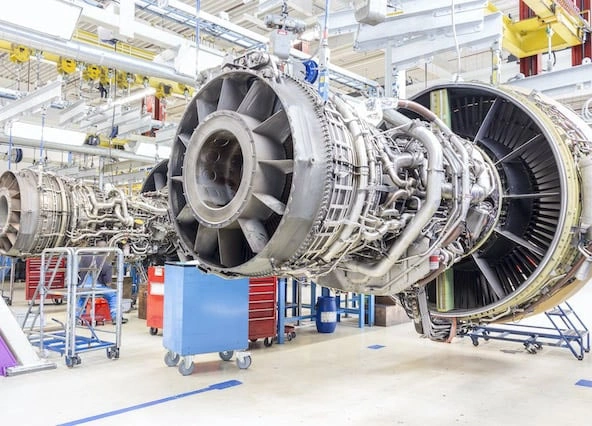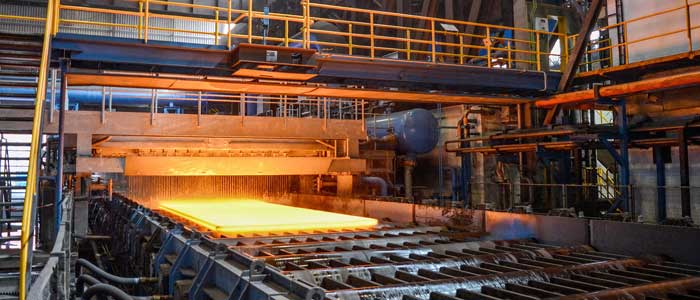Understanding the different types of magnetic materials is essential for anyone interested in engineering, electronics, or physics. Magnetic materials are broadly classified into two categories: hard magnetic materials and soft magnetic materials. Each type has unique characteristics and uses, making them indispensable in various applications. In this article, we will explore examples of both hard and soft magnetic materials, their properties, and their applications.
Magnetic materials are substances that respond to a magnetic field by exhibiting magnetic properties. These materials can be classified based on their magnetic behavior, which depends on the material’s structure and composition. The two main categories are:
Magnetic materials are defined by their ability to exhibit magnetic properties when exposed to a magnetic field. This response can vary significantly depending on the material’s intrinsic properties, such as electron configuration and crystal structure. The magnetic behavior of these materials is often the result of the alignment of magnetic moments within the material, which various external factors can influence.
Magnetic materials are primarily divided into two categories based on their magnetic behavior:
- Hard Magnetic Materials: Also known as permanent magnets, these materials retain their magnetism even after the external magnetic field is removed. This retention is due to high coercivity, which measures the material’s resistance to becoming demagnetized.
- Soft Magnetic Materials: These materials are easily magnetized and demagnetized. They possess low coercivity, allowing them to quickly change their magnetic state, making them suitable for applications where the magnetic field needs to change frequently.
Magnetic materials are foundational in numerous technological and industrial applications. They are critical in the design of electrical devices, data storage solutions, and various types of sensors and actuators. Their ability to convert electrical energy into mechanical energy, and vice versa, makes them indispensable in engineering and electronics.
Hard magnetic materials, or permanent magnets, are characterized by their ability to maintain a stable magnetic field. This stability comes from their high coercivity, which is the resistance to demagnetization. These materials are used to create permanent magnets, which are crucial in various industrial and everyday applications.
Characteristics of Hard Magnetic Materials
Hard magnetic materials are known for their robust magnetic properties, which make them ideal for applications requiring a constant magnetic field.
High Coercivity
The high coercivity of hard magnetic materials allows them to resist demagnetization. This property is crucial for maintaining a permanent magnetic field, even in the presence of external demagnetizing influences. This makes them suitable for long-term applications where stability is paramount.
Magnetic Stability
Due to their high coercivity, these materials offer excellent magnetic stability over time. This stability ensures that devices using permanent magnets operate efficiently and reliably without frequent maintenance or recalibration.
Temperature Dependence
Hard magnetic materials generally exhibit good temperature stability, which is important for applications that experience a wide range of operating temperatures. Some alloys and compounds are specifically designed to maintain their magnetic properties even at elevated temperatures.
Examples of Hard Magnetic Materials
Hard magnetic materials are used in various applications due to their strong and lasting magnetic properties.
Ferrites
Ferrites are ceramic compounds made from iron oxides mixed with other metallic elements. They are valued for their high magnetic permeability and electrical resistivity, which makes them suitable for high-frequency applications. Commonly found in refrigerator magnets and speakers, ferrites are a staple in many household and industrial products.
Alnico
Alnico is an alloy composed of aluminum, nickel, and cobalt, known for its high magnetic strength and temperature stability. This material is used in applications that require a robust magnetic field, such as electric motors and sensors. Its ability to perform well at high temperatures makes it a popular choice in demanding environments.
Samarium Cobalt (SmCo)
As a type of rare-earth magnet, Samarium Cobalt (SmCo) offers high resistance to demagnetization and exceptional temperature stability. These properties make SmCo magnets ideal for aerospace and military applications, where reliability and performance under extreme conditions are critical.
Neodymium Iron Boron (NdFeB)
Neodymium Iron Boron (NdFeB) is another rare-earth magnet and is one of the strongest permanent magnets available. Known for its exceptional magnetic strength, NdFeB is used in high-performance applications such as hard drives, headphones, and electric vehicles. Its powerful magnetic properties allow for the miniaturization of devices without sacrificing performance.
Applications of Hard Magnetic Materials
Hard magnetic materials are essential in creating devices that require a constant magnetic field. They are used in a variety of applications that benefit from their stable and powerful magnetic properties.
Electric Motors and Generators
Permanent magnets are integral components in electric motors and generators, providing the necessary magnetic field for converting electrical energy into mechanical energy and vice versa. Their ability to maintain a stable magnetic field ensures efficient energy conversion and reliable operation.
Magnetic Storage Devices
Hard magnetic materials are used in magnetic storage devices, such as hard drives, where they provide the magnetic field necessary for data storage and retrieval. Their stability and strength allow for high-density data storage, crucial for modern computing and data management.
Loudspeakers and Headphones
In loudspeakers and headphones, permanent magnets are used to convert electrical signals into sound. The magnets interact with the voice coil to produce sound waves, providing the audio experience we rely on in everyday life.
Magnetic Locks and Clasps
Magnetic locks and clasps utilize permanent magnets to provide secure and reliable fastening solutions. Their ability to maintain a magnetic field ensures that doors and enclosures remain securely closed, offering safety and convenience.
Soft Magnetic Materials
Soft magnetic materials are characterized by their low coercivity, which means they can easily switch between magnetized and demagnetized states. This property makes them ideal for applications where the magnetic field needs to be quickly altered.
Characteristics of Soft Magnetic Materials
Soft magnetic materials are designed to respond rapidly to changes in magnetic fields, making them suitable for dynamic applications.
Low Coercivity
The low coercivity of soft magnetic materials allows them to be easily magnetized and demagnetized. This property is beneficial in applications where the magnetic field must frequently change direction or intensity, such as in transformers and inductors.
High Magnetic Permeability
Soft magnetic materials typically exhibit high magnetic permeability, allowing them to conduct magnetic flux efficiently. This characteristic makes them ideal for applications that require efficient magnetic coupling and minimal energy loss.
Energy Loss Minimization
In applications such as transformers and inductors, minimizing energy loss is crucial. Soft magnetic materials are engineered to reduce energy loss through low hysteresis and eddy current losses, enhancing the efficiency of electrical devices.
Examples of Soft Magnetic Materials
Soft magnetic materials are employed in a wide range of applications due to their adaptability and efficiency.
Iron-Silicon Alloys
Iron-silicon alloys are widely used in electrical machines and transformers. The addition of silicon increases the electrical resistivity of iron, reducing energy loss and enhancing performance. These alloys are essential in power generation and distribution systems.
Nickel-Iron Alloys (Permalloy)
Nickel-iron alloys, commonly known as permalloy, are used in applications requiring high magnetic permeability and low coercivity. They are often employed in magnetic shielding and inductors, where effective magnetic field management is necessary.
Soft Ferrites
Soft ferrites, similar to hard ferrites but with lower coercivity, are used in transformer cores and inductive components in electronics. Their ability to operate efficiently at high frequencies makes them suitable for a wide range of electronic devices.
Amorphous Steel
Amorphous steel features a disordered atomic structure, offering low energy loss and high permeability. It is used in high-efficiency transformers, where reducing energy loss is critical for improving overall system performance.
Applications of Soft Magnetic Materials
Soft magnetic materials are essential for applications that require rapid changes in magnetization. They are used in various fields, from energy distribution to electronic devices.
Transformers and Inductors
Soft magnetic materials are crucial in the design of transformers and inductors, where they facilitate the efficient transfer of energy between circuits. Their ability to quickly respond to changes in magnetic fields ensures effective energy management and minimal losses.
Electromagnets and Coils
Electromagnets and coils rely on soft magnetic materials to produce controlled magnetic fields. These components are used in a wide range of applications, from industrial machinery to consumer electronics, where precise magnetic control is necessary.
Magnetic Shielding
In environments where magnetic interference can disrupt sensitive equipment, soft magnetic materials are used for magnetic shielding. Their ability to absorb and redirect magnetic fields helps protect devices and ensure accurate performance.
Power Supplies and Converters
Power supplies and converters utilize soft magnetic materials to manage energy flow and conversion. Their efficiency and adaptability make them ideal for applications that require stable and reliable power delivery.
Differences Between Hard and Soft Magnetic Materials
While both hard and soft magnetic materials are essential in various applications, they differ significantly in their properties and uses:
Coercivity
The most notable difference between hard and soft magnetic materials is their coercivity. Hard magnetic materials have high coercivity, allowing them to retain magnetism without an external field. In contrast, soft magnetic materials have low coercivity, enabling them to be easily magnetized and demagnetized as needed.
Magnetic Retention
Hard magnetic materials are designed to maintain their magnetic properties over time, even in the absence of an external magnetic field. This makes them ideal for permanent magnet applications. Soft magnetic materials, however, do not retain magnetism without an external field, making them suitable for dynamic applications where the magnetic field frequently changes.
Applications
The applications of hard and soft magnetic materials are determined by their respective properties. Hard magnetic materials are used where a constant magnetic field is needed, such as in motors and magnetic storage devices. Soft magnetic materials are used in applications requiring frequent changes in magnetization, such as transformers and inductors, due to their ability to respond rapidly to magnetic field variations.
Engineering and Magnetism
Understanding the properties of hard and soft magnetic materials is crucial for engineers and scientists. These materials play a vital role in the design and operation of various technologies. Engineers must consider factors like coercivity, magnetic permeability, and energy loss when selecting materials for specific applications.
Material Selection in Engineering
When designing devices and systems, engineers must carefully select the appropriate magnetic materials to ensure optimal performance. This involves considering factors such as the operating environment, required magnetic properties, and potential energy losses. The right material selection can significantly impact the efficiency and reliability of the final product.
Innovations and Advancements
The field of magnetic materials is continually evolving, with ongoing research aimed at developing materials with improved properties. Innovations focus on enhancing temperature stability, reducing energy loss, and increasing magnetic strength. These advancements are crucial for meeting the growing demands of modern technology and industry.
The Future of Magnetic Materials
With advancements in technology, the demand for efficient and powerful magnetic materials continues to grow. Research is ongoing to develop new materials with improved properties, such as higher temperature stability and reduced energy loss. These advancements will enable the creation of more efficient and sustainable technologies, shaping the future of engineering and electronics.
In conclusion, hard and soft magnetic materials are foundational to many modern technologies. By understanding their properties and applications, engineers can design more efficient and effective devices. Whether it’s in the form of a permanent magnet or a transformer core, these materials continue to shape the world of engineering and technology.










